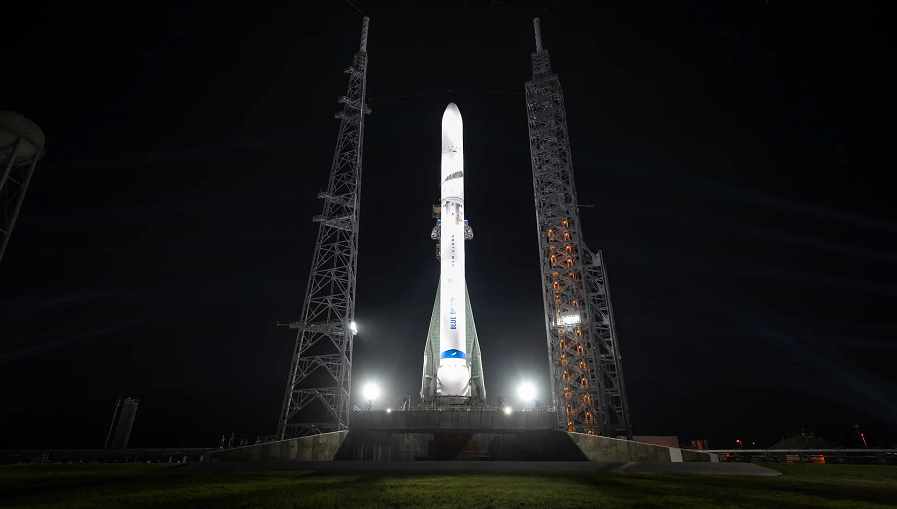 EMERGING TECH
EMERGING TECH
 EMERGING TECH
EMERGING TECH
 EMERGING TECH
EMERGING TECH
Blue Origin Enterprises LP, Jeff Bezos’ aerospace company, today conducted the first successful flight of its New Glenn rocket.
The heavy-lift vehicle includes a reusable booster designed for up to 25 launches. Blue Origin will use future New Glenn rockets to deploy satellites for Amazon.com Inc. and other private sector customers, as well as help NASA take astronauts to the moon.
New Glenn took off at 2:03 a.m. EST from a launching pad in Cape Canaveral, Florida. The launch previously had to be delayed for about week because of bad weather and ice that formed on an auxiliary power system. Not long after takeoff, Blue Origin announced on its website that New Glenn had successfully achieved its primary goal: transporting a satellite deployment system called the Blue Ring Pathfinder to orbit.
The Blue Ring Pathfinder resembles an oversized ice cream cone with a pair of wings. Those wings are roll-out solar arrays that extend 144 feet. According to Blue Origin, the system has room for up to 13 satellites and other instruments that it can release at different altitudes.
For today’s flight, the company didn’t equip the Blue Ring Pathfinder with any customer payloads. Instead, the company carried out a series of tests to collect data for future launches. “The Blue Ring Pathfinder is receiving data and performing well,” Blue Origin detailed this morning.
The flight’s secondary goal wasn’t achieved. Blue Origin had hoped to recover the New Glenn’s booster by landing it on a ship, which would have made it possible to reuse the module. ”We knew landing our booster, So You’re Telling Me There’s a Chance, on the first try was an ambitious goal,” said Blue Origin Chief Executive Officer Dave Limp. “We’ll learn a lot from today and try again at our next launch this spring.”
The New Glenn features a two-stage design. The first stage, the reusable booster, lifts the rocket off the launch pad and powers it through the initial stretch of the journey to orbit. It does so using seven engines that Blue Origin produces in-house.
After the New Glenn completes the first leg of its flight, the booster detaches and begins its journey back to Earth. Three of the onboard engines reactivate to slow down the module while aerodynamic fins put it on a trajectory towards a recovery ship. Immediately before touching down, the booster deploys six hydraulically-powered legs to ensure a safe landing.
About three minutes into today’s flight, the booster separated and began its descent. The three engines used to slow down the module activated successfully. However, one of them malfunctioned shortly thereafter and the booster subsequently stopped transmitting telemetry. “We lost the booster during descent,” Blue Origin stated.
After detaching the booster, the New Glenn’s second stage continued its journey above the atmosphere. The latter module is powered by four engines optimized to operate in the vacuum of space. Blue Origin attached the Blue Ring Pathfinder to the top of the second stage.
New Glenn is at the center of Blue Origin’s plans to provide a commercial space launch service. The company is currently in the process of assembling several more heavy-lift vehicles based on the same design. According to Blue Origin, customers have booked more than 80 flights to date.
One of those customers is NASA, which will use a New Glenn rocket to launch a cargo-carrying moon lander as part of its Artemis program. The system will be joined by a crewed lander sometime after 2030.
In the more immediate future, Blue Origin will provide launch services for Amazon’s Project Kuiper program. The initiative will see the latter company deploy thousands of internet satellites in low Earth orbit. Blue Origin also counts several telecommunications providers and AST SpaceMobile Inc., a publicly traded satellite maker, among its customers.
THANK YOU